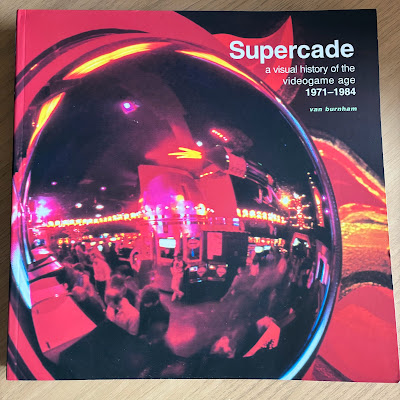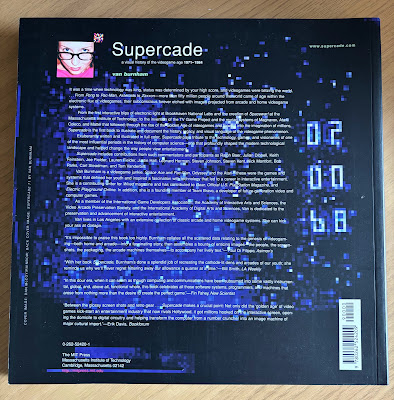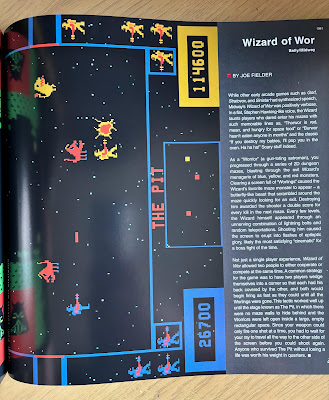Now this is a coffee table book and a half. First published in 2001, Supercade: A Visual History of the Videogame Age 1971-1984 (hearby just called Supercade 1, for as Yoda said, there is another), aims to address the requirement for demonstrating the aesthetic beauty of videogames as well as its evolution. Over 440+ pages, Van Burnham and a gaggle of contributors lay out the history of the art form as well as the hardware and characters between 1971 and 1984. And it is stunning.
Seriously, this is an art book first and foremost, with full pages dedicated to photography and screen grabs. Artwork pops off the page, and what would now be considered archaic graphical resolutions are celebrated in luxuriously high detail. Indeed, on my first read through, I pretty much ignored the text and looked at the (very) pretty pictures. But there is more to Supercade 1 than just the eye candy. Oh, much, much more...
As Maria told the von Trapp children, the beginning is a very good place to start, and this they do in Supercade 1. From the foreword by the late Ralph H. Baer, the history lesson begins at Brookhaven National Labs with Tennis for Two before moving on to MIT. It is this grounding in the very early history of computer entertainment and the intertwining of imagery and historical research that makes Supercade 1 a perfect introduction to videogames, what they started out as and how they evolved in their formative years. Every entry is well researched and written in an easy style. Tear yourself away from the visual feast and you will learn stuff too.
You heard the but coming, didn't you?
Yes, but only a little one. This is a US-centric tome and, to be honest, that's understandable. Due to the coverage of arcades, there is a hefty dose of Japanese titles, but only two pieces of Japanese home hardware: Sega's SG-1000 (giving useful context to who Sega were before their 16-bit glory days) and Nintendo's Famicom because, well, obviously! But what about everyone else? You do get the ZX Spectrum. I am not going to deny its obvious importance to the UK gaming scene, and the ZX81 did see a US release as the Timex 1000, but where are the others? The Amstrad CPC? The BBC Micro?? The Grundy NewBrain??? Honestly, some people! ;-)
In truth, it is rather churlish of me to complain too much - this is a visual history of videogames and the early days were heavily driven by US and Japanese companies. There is only so much you can include in a book this size (remember, it's a hefty beast at nearly 450 pages), and what it does cover, it covers extremely well. There are certainly many other resources for those who want to look from a UK/European perspective, and when all is said and done, most of the titles mentioned in Supercade are, at worst, genre classics, and at best, defining examples of the art form.
Supercade 1 is a superlative feast for the eyes (and the brain) on a subject that, although covered in various guises over the years, really deserved the coffee table treatment, and it sure has received that here. While it is currently sold out at the US-based webshop here, have a Google and you may pick it up from an online retailer for not stupid money. This is the perfect coffee table book about video games, and one that deserves to be on yours. if you don't have a coffee table, buy one or, if you must, place this book carefully on a sturdy bookshelf.





No comments:
Post a Comment